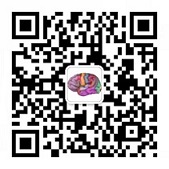Self-limited Epilepsy With Autonomic Features
previously known as Panayiotopoulos syndrome or early onset benign occipital epilepsy
Etiologies: It is likely to be genetically related (involving polygenic inheritance is more likely), but usually there is no family history of epilepsy and febrile seizures.
Age of onset: onset of seizures between 1 and 14 years of age (majority between 3 and 6 years), most of them are relieved within 1-2 years after seizure onset, and 5-17% of children can have a history of febrile seizures.
Seizure characteristics: Autonomic seizures mainly include vomiting. Some patients may have constituting autonomic status epilepticus. There is often unilateral deviation of eyeballs in the middle of the seizure. Seizures are infrequent in most patients, with 25% having a single seizure, and 10-20% of children can turn into self-limited epilepsy with centrotemporal spikes in the later stage [1-2].
EEG: Background: normal. Interictal: occipital spike (sharp) and wave, which can involve the posterior temporal region, one or both sides, left and right can be synchronous or asynchronous, or other regions. There can be multiple focal or general discharges, which mostly exist at the same time with occipital discharges. Eye closure (elimination of central vision and fixation off sensitivity) may activate occipital spikes. Epileptic discharges tend to increase and spread during NREM sleep. Ictal: it can be characterized by the origin of the posterior head (occasionally the anterior head) θ or δ Rhythm, which can be intermixed with small spikes or fast rhythm [1-2].
Brain MRI: Most of them are normal.
Developmental progress: Basically normal.
2022 International League Against Epilepsy (ILAE) diagnostic criteria [3]:
Mandatory: Focal autonomic seizures, with or without impaired awareness; Autonomic symptoms often involve prominent retching and vomiting, but may also include malaise, pallor, flushing, abdominal pain, and pupillary or cardiorespiratory changes. High-amplitude, focal or multifocal epileptiform abnormalities that increase in drowsiness and sleep; Remission by early to mid adolescence; No developmental regression.
Alerts: Seizure frequency greater than monthly; Sustained focal slowing not limited to the postictal phase; Unilateral focal abnormalities in a consistent focal area across serial EEGs; age of first onset younger than 3 years or older than 8 years; Moderate to profound intellectual disability; Hemiparesis or focal neurological findings, other than Todd paresis.
Exclusionary: age of first onset younger than 1 years or older than 14 years; Neurocognitive regression with a continuous spike-and-wave pattern in sleep (suggests epileptic encephalopathy with spike-and-wave activation in sleep (EE-SWAS) ); Causal lesion on brain MRI.
Reference
- Panayiotopoulos. 癫痫综合征及临床治疗. 北京 : 人民卫生出版社, 2012.
- 刘晓燕. 临床脑电图学. 第2版. 北京 : 人民卫生出版社, 2017.
- Specchio, N., et al., International League Against Epilepsy classification and definition of epilepsy syndromes with onset in childhood: Position paper by the ILAE Task Force on Nosology and Definitions. Epilepsia, 2022.

 English
English  简体中文
简体中文 